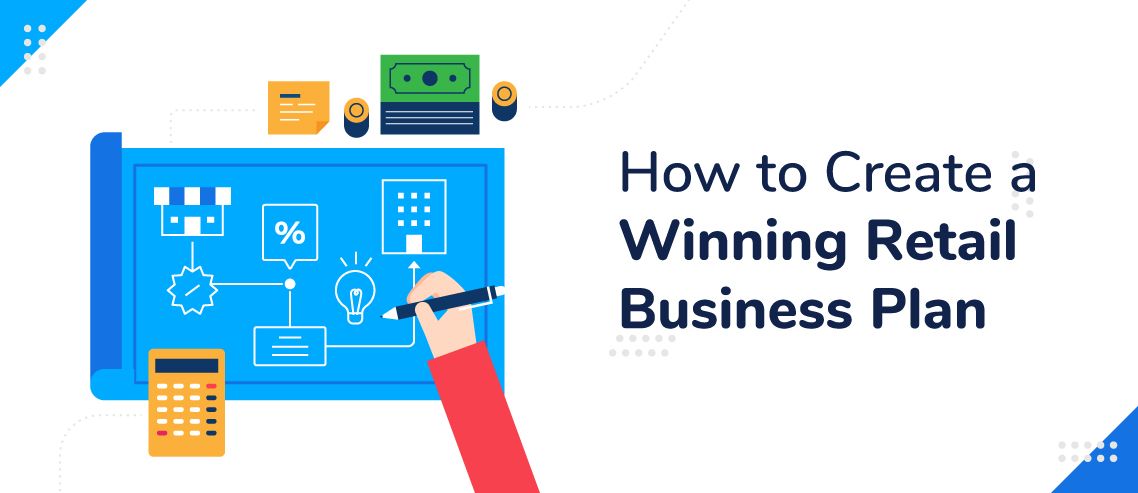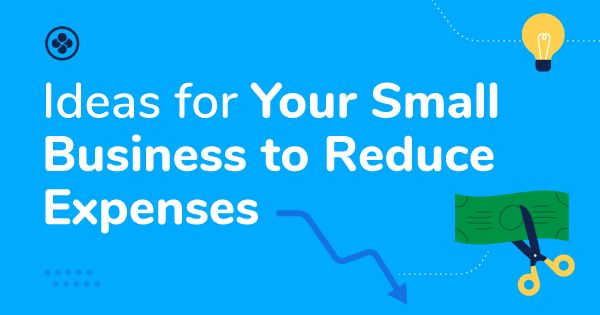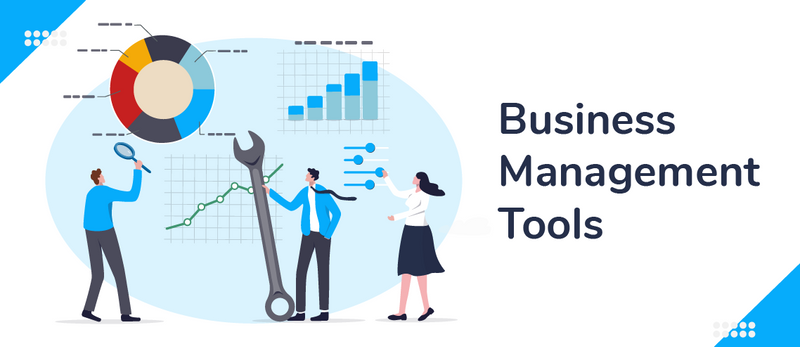How to Create a Winning Retail Business Plan

You’re about to learn how to create a winning retail business plan. You can use this plan to either start or grow your retail business. Importantly, rather than simply learning the key sections to include in your plan, you’ll see below the strategic questions that, upon answering, can help your business soar.
Your retail business plan must include 10 sections.
1. Executive Summary
2. Company Overview
3. Industry Analysis
4. Customer Analysis
5. Competitive Analysis
6. Marketing Plan
7. Operations Plan
8. Management Team
9. Financial Plan
10. Appendix
Each section is discussed below in showing you how to create a business plan for your retail business.
Elements of a Retail Business Plan
1. Executive Summary
Your Executive Summary gives a recap of your entire business plan. In addition to providing an overview of your retail business, you’ll briefly describe your customers, competitors, marketing plan, operations plan, management team and financial projections.
Importantly, winning retail business plans answer two key questions both in their executive summaries and in the other sections of the plan. These 2 questions are as follows:
-
Why is my retail business uniquely qualified to succeed?
There are many reasons why you could be uniquely qualified to succeed; perhaps you have the perfect location, or the best product mix, or special relationship with vendors or suppliers. Maybe you have an extremely loyal customer base. Or a management team or employees who are highly skilled and motivated.
The key is this: ideally you have multiple areas in which your business is uniquely qualified to succeed. In developing your plan, think through your current unique qualifications. And, importantly, strategize what new unique qualifications you’d like to gain to enjoy lasting competitive advantage. And think about what you need to do in order to develop these new qualifications.
-
What do I hope my retail business will look like in 5 years?
If you don’t know where you’re going, unfortunately you’ll never get there. As such, a critical strategic exercise to complete in your business plan is to set goals for your retail business in 5-years’ time.
The first question you should answer is this: what would you like your revenues to be in five years? Then, think about how your business would look if you reached that goal. For example, how many employees would you have? Would your management team be the same, or would you have added or replaced current members? How many customers would you be serving each day? Would you be operating new locations? What marketing strategies would have helped you reach your revenue goals?
Each of these questions need to be answered in the Executive Summary and in the appropriate sections below.
2. Company Overview
Your company overview section gives background information on your company. But it can and should have strategic value to your company. Here’s how. Include your key accomplishments to-date in this section of your business plan. For example, list dates and accomplishments you’ve achieved so far such as the dates when you reached a certain level of sales, or hired your Xth employee.
Not only will documenting these accomplishments motivate you and others that read the plan, but think through the strategies you employed that allowed you to accomplish these goals. And make sure you continue to use these strategies that have worked well for you in the past. Conversely, too many companies keep trying new strategies while those they’ve already used successfully go by the wayside.

3. Industry Analysis
In the Industry Analysis section of your plan, document the size of your current market and trends that are affecting it. Ideally you can access third party research on your industry that includes this data. Typically trade associations conduct and publish such research.
Importantly, make sure your growth strategies are in line with these trends. For example, if there’s a trend towards ordering online and picking up in-store, make sure you offer this option to customers.
While you want to enjoy near-term success, you also want to realize long-term growth and success. So look at your industry’s trends and forecasts to ensure both your industry and your company are moving in the same direction.
4. Customer Analysis
Your customer analysis identifies your target customers and their wants and needs. By better understanding your customers you can a) better target them with promotions, and b) make sure you offer them the right mix of products and services.
So make sure your proposed strategies are in line with your target customers, or think through ways to reach new customer segments.
5. Competitive Analysis
The competitive analysis section of your retail business plan identifies your key competitors and their strengths and weaknesses.
Think through your competitors’ strengths and see how you can combat them. LIkewise, assess their weaknesses and see how you can exploit them. The goal of this section is to figure out if you have and/or how you can build lasting competitive advantage.
6. Marketing Plan
The marketing plan includes the “4 P’s” as follows: Product, Price, Place, Promotions.
- Product: here’s where you describe your current product/service mix and what products/services you need to add to reach your desired long-term goals.
- Price: here you’ll document your pricing strategy.
- Place: Place refers to the location of your retail business. Any store expansion plans would be discussed here.
- Promotions: Your promotions section details how you will reach new customers. There are numerous ways to do this, from pay-per-click ads to print advertising to social media marketing and customer referral programs. Document the strategies that you’re currently using, those that have worked well in the past, and those you’ll employ in the future to allow you to realize your growth goals.
7. Operations Plan
In your operations plan, you must document and detail your long-term and short-term milestones.
Start by identifying and documenting your 5-year goals in terms of sales, number of employees, customers served, store openings and/or other relevant metrics.
Then you need to work backwards. Identify the key goals you need to reach in each of the next 5 years to reach your ultimate goal. Finally, you need to get even more granular for the first year. That is, document your goals for each quarter of the coming year.
For example, if you currently have a headcount of 50 and your goal is to get to 500 employees, your goals might be to add 10 employees in the first quarter, 15 employees in the second quarter, 20 employees in the third quarter, 25 employees in the fourth quarter, 80 employees in the second year, 90 employees in the third year, 100 employees in the fourth year, and 110 employees in the fifth year.
Likewise, document your plan for employee retention, as losing key employees will hinder your ability to achieve your growth objectives.
By using this process, you can truly identify and then attain your goals.

8. Management Team
In this section of your plan you’ll document your management team.
Importantly, you need to think through whether your current management team is capable of growing your business to the desired level. Think about which management team members can grow with you. Think through whether you should invest in them to improve their skill sets. Also, figure out if you need to add or replace current members. If so, write a job description of the team members you’ll need to add and the dates you’d like to bring them on.
9. Financial Plan
The financial plan section of your business plan includes an Income Statement, Balance Sheet and Cash Flow Statement. It also lists the key assumptions you’ve used in deriving these 5-year projections.
Among other things, your financial plan will identify how much money is needed to execute on your plan. Likewise it will alert you to potential cash crunches. For example, purchasing new equipment or software might help your business grow, but it may require an investment that your bank account doesn’t currently support.
If you’re looking for outside funding to grow your business, banks and equity lenders will review your financial plan to ensure they will be repaid or get an adequate return on their investment. But even if outside funding is not required, developing your financial plan is critical.
One key benefit of your financial plan and forecasts is that they allow you to assess new opportunities. For example, you should be able to tell the cash requirements and potential returns for different strategies you might pursue. Use your forecasts to select only the best ones.
Finally, your financial projections will give you goals. They serve as a financial scorecard against which you should judge actual performance. Each month and quarter, judge your actual financial performance against your forecasts. See where you’ve succeeded and where you’ve fallen short. And if you’ve fallen short, strategize regarding what you can do differently to improve your success going forward.
10. Appendix
The appendix of your plan includes any supporting information. For example management team resumes or vendor agreements could be included if they bolster arguments stated in your plan.
Creating a business plan for your retail business puts you on the path to creating competitive advantage and enjoying long-term success. It starts with simply dreaming about what you’d like the future to look like. Then, you strategize to put plans in place to ensure that vision becomes a reality.
JD enjoys teaching people how to use ZoomShift to save time spent on scheduling. He’s curious, likes learning new things everyday and playing the guitar (although it’s a work in progress).



